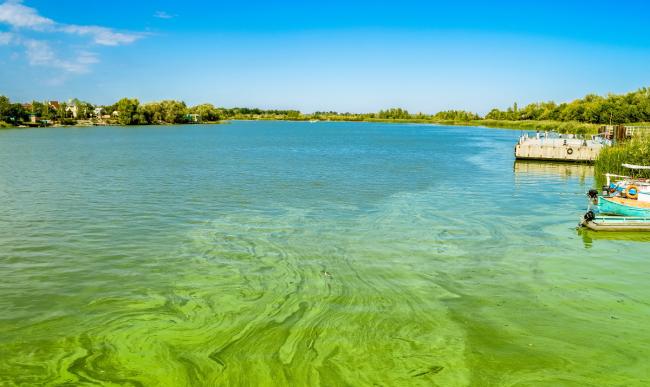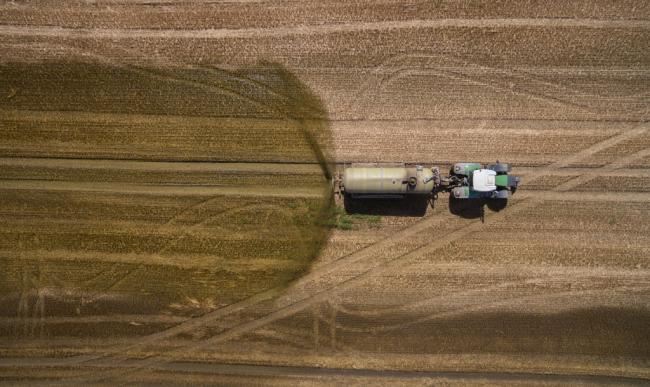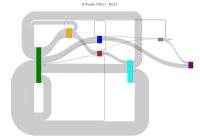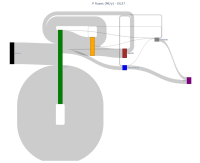Towards an integrated Nutrient Management Action Plan
In the Biodiversity Strategy to 2030, the Farm to Fork Strategy and the Zero Pollution Action Plan, the European Union has announced an ambitious and ground-breaking goal: the reduction of nutrient losses to the environment - air, water, soil - by 50% within 2030.
This will be achieved by implementing and enforcing the relevant environmental and climate legislation in full, identifying with Member States the nutrient load reductions needed to achieve these goals, applying balanced fertilisation and sustainable nutrient management, and by managing nitrogen and phosphorus better throughout their lifecycle.
The Plan should cover all sectors and environmental compartments involved in the nitrogen and phosphorus cycles.

The Knowledge for INMAP project, developed by the JRC during the year 2021, gathered scientific knowledge and data available in the EU to support the discussion and preparation of an Integrated Nutrient Management Action Plan. In particular:
- the current flows of nitrogen and phosphorus in the EU considering all sources and sectors involved (agriculture, industries, urban, energy and transport) and all environmental losses in air, water, and soils
- the distance to environmental targets, considering the EU legislation and strategies
- the possible impacts of measures to reduce nutrient pollution at different intervention points of the nutrient cycle.

The project focused on gathering relevant scientific knowledge available in Europe for the preparation of an Integrated Nutrient Management Action Plan.
Many data sources were used and combined for the analysis of nitrogen and phosphorus stocks and flows in the different sectors and environmental compartments.
The scenarios analysis, that are based on specific datasets and assumptions, took into consideration several modelling tools.
Data and scenario analysis highlight potential paths and regional opportunities towards the achievement of ambitious goal of nutrient reduction, while acknowledging the limits in integration of tools and that uncertainty in flows estimations is part of the complexity of the nitrogen and phosphorus cycle analysis.
Flows
Human activities have altered the natural nitrogen and phosphorus cycles, increasing the amount of nutrients losses to air, water and soil, with detrimental impacts for human health, ecosystem functioning and biodiversity.
In 2011 the first European Nitrogen Assessment (ENA) gathered scientific evidence on the alteration of the nitrogen cycle in Europe and its consequences on air and water quality, terrestrial biodiversity and climate, drawing attention on possible actions to curb and reduce nitrogen pollution acting at different points of the cycle.
ENA paved the way for an integrated nutrient management action. Knowledge on the nutrient fluxes originated from different sources and flowing into different environmental compartments is key for understanding the level of disruption of the natural nitrogen and phosphorus cycles and for planning measures to reduce nutrient pollution while preserving soil fertility.

Nitrogen and phosphorus cycles in EU27
Discover the major fluxes in the nitrogen and phosphorus cycles around year 2015. Fluxes are estimated for EU27, based on recent data from different sources, including both reported data and model results (See the Table 2.1 of the report).

Nitrogen fluxes in EU27 in 2015 (Mt)

Phosphorus fluxes in EU27 in 2015 (Mt)
Nutrient losses to air, soil and water per regions and sources
Discover the information on nitrogen and phosphorus losses to the environment at different spatial levels (i.e. country, region, river basin or catchment) and find how they show regional impacts and how they can support several planning levels.
Explore how knowledge on the size of nutrient flows and on the contributions of different sources can support the development of integrated nutrient management plans at the regional and national level.
Explore the visualisation tools.
Targets
In its Biodiversity Strategy to 2030, the European Commission has set the goal of reducing nutrient losses to the environment by at least 50%. This will be achieved by implementing the current EU legislation on nutrient and by a new holistic action plan (INMAP) for sustainable nutrient management.
The EU has several ambitious policies dealing with reduction of nutrient emissions to the environment - air, soil, water - and nutrient management and recycling in waste. The INMAP will take stock of these, and harmonize actions to fulfil their objectives.

Measures
Measures can reduce nutrient losses to the environment. The potential impacts of different measures are explored by means of modelling scenario analysis. Modelling analysis are theoretical and the quality of data and assumptions are limiting factors , but the analysis can provide insights and support reflection on the effects of measures. They help highlighting potential gains and regional opportunities. However, feedback loops between losses to environmental sectors (air, water, soil) could not be considered in full yet.
Explore the dashboards
Visualisation tools and dashboards
Flows - Nutrient losses to air, soil and water at different spatial level
Flows - Nutrient losses to air, soil and water by country and source


